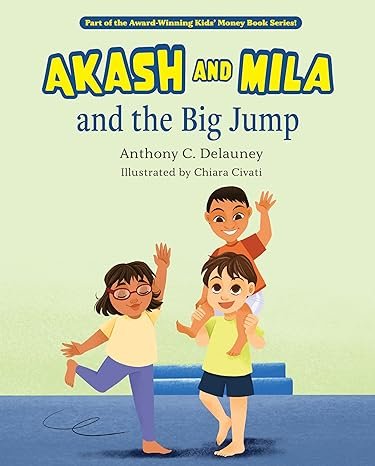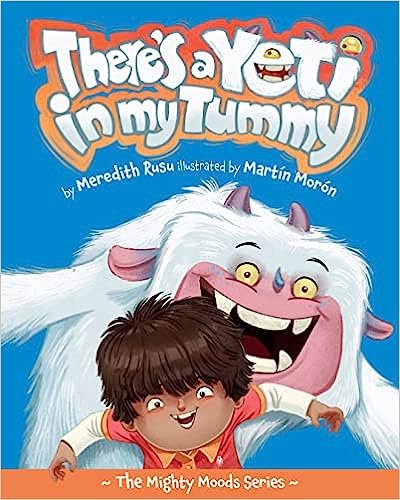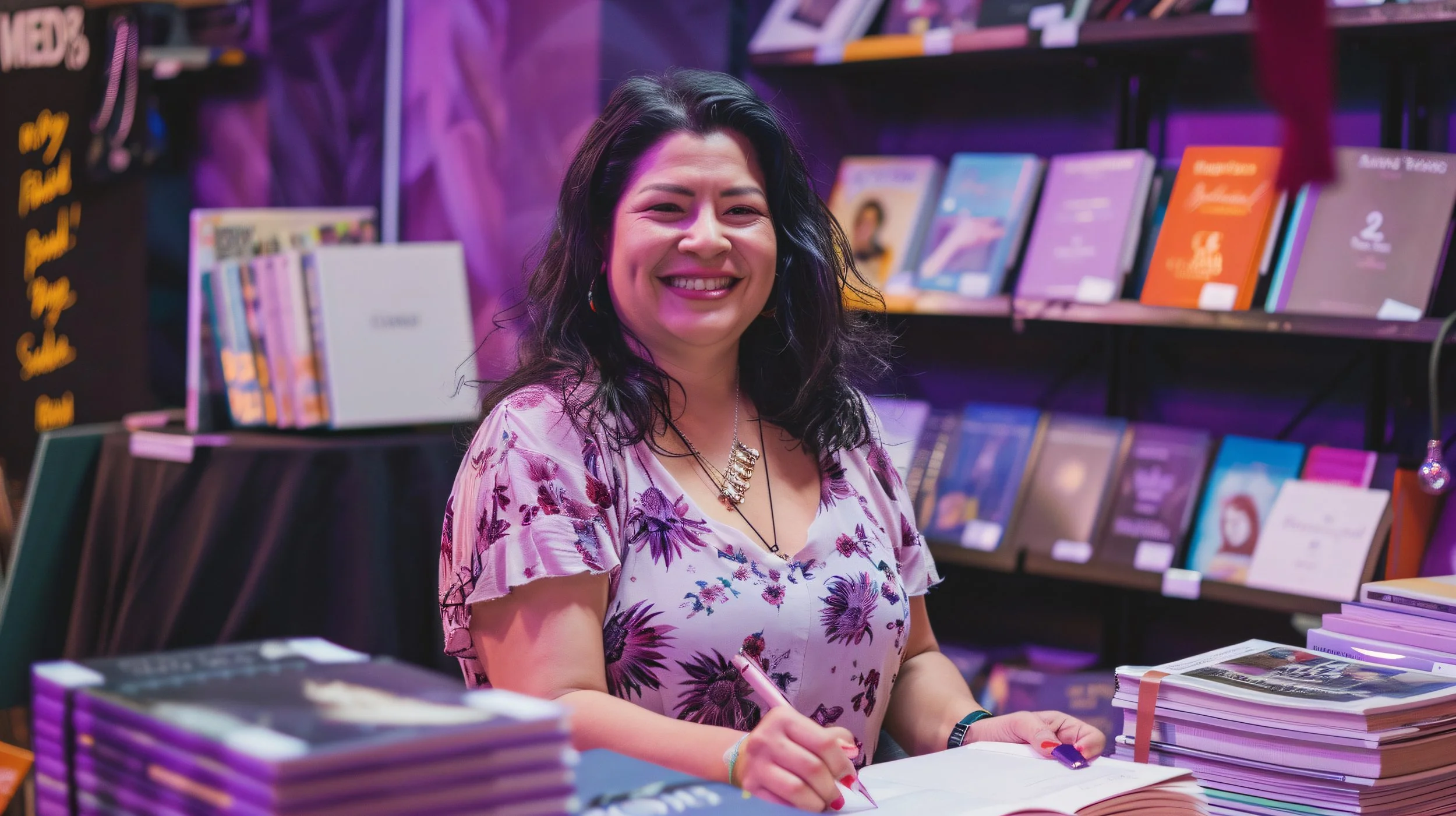Q&A with Casablanca Christmas Authors
/Can you believe Christmas is right around the corner? To celebrate, we asked the authors of our 2019 Christmas titles to answer some fun, wintry and Christmas themed questions!
Fall in love this Christmas and be sure to read:
Longing for a Cowboy Christmas by Leigh Greenwood, Rosanne Bittner, Linda Broday, Margaret Brownley, Anna Schmidt, and Amy Sandas
Wish Upon a Cowboy by Jennie Marts
Cowboy Christmas Kiss by Kim Redofrd
Cowboy Christmas Homecoming by June Faver
A Dash of Christmas by Samantha Chase
Puppy Christmas by Lucy Gilmore
Silver Town Wolf: Home for the Holidays by Terry Spear
Keep reading to get in the Christmas spirit and check out the books over at Romance Reads!
***
What’s the best part about writing a Christmas book?
Rosanne Bittner: The best part about writing a Christmas story is that it takes me into that “miracle” mood that seems to be a part of the Christmas holiday. I always try to include some kind of little miracle in my stories. In last year’s anthology, Christmas In A Cowboy’s Arms, my story miracle was the healed awakening of an unconscious little girl. This year, in Longing for A Cowboy Christmas, my miracle surrounds the birth of a baby boy the mother wasn’t sure she could love.
Anna Schmidt: For me the holidays are a magical time of sharing and giving and FORgiving. To be able to tell stories that convey those things is a gift in itself.
Jennie Marts: Capturing all the magic of the Christmas season and giving it to both your characters and your readers as you create touches of that magic in the story.
June Faver: The absolutely best part of writing a Christmas book in Texas is that I’m wearing shorts, tank top and flip-flops while writing about slogging through the snow. It helps with the endless summer heat when my brain is hauling hay to cattle in the snow blanketed fields.
Kim Redford: Magic! A larger-than-life theme that touches many lives always arises when I’m writing a Christmas book. In Cowboy Firefighter Christmas Kiss, Fernando, the stolen bull, escapes and heads for home where an eight-year-old girl awaits him, hoping he’ll get there in time for Christmas. In A Cowboy Firefighter for Christmas, troubleshooter Misty Reynolds arrives in time to help Trey Duval stop a brushfire, investigate a Christmas tree farm fire, and be dubbed his “Christmas Angel.”
Lucy Gilmore: One of the best (and sneakiest) things for an author to do is put their own family traditions into the book. We all have our unique ways of celebrating and enjoying the holidays, many of which are passed down from generation to generation. By writing a Christmas book, I can share some of those traditions with the world, and you don’t even know I’m doing it!
Margaret Brownley: I always seem to be writing a Christmas book during the searing heat of summer. To get in the right mood, I try to imagine a reader curled up in front of a blazing fire, hot chocolate in hand and smiling as she reads my story. The image usually puts me in the Christmas spirit. On the few occasions it fails to work, I stick my feet in a bucket of ice water.
Samantha Chase: There is something about writing a Christmas book that just gives me joy from the first word to the last. I think it’s because everyone always seems happier during the holidays and that gets to be portrayed in the book. The plot doesn’t have to be quite so angsty – everything is lighter and sweeter and always ends with a Merry Christmas!
Terry Spear: I always end up having to write them during the hot Texas summers, so when I write a Christmas book, I look for Christmas recipes, make up pictures of wolves and snow, and cool myself down.
What is something you can’t live without during the holiday season?
Amy Sandas: Cozy socks. I'm not much for slippers, but my feet are always cold so I love to warm them up with thick, super-soft socks.
Anna Schmidt: Traditions from my childhood—my family was very into giving to others especially those who might not be blessed with family at that time of year so I love finding ways to shop and wrap and give to others.
Jennie Marts: We have a tradition of our family going to the Candlelight Service at church on Christmas Eve then coming back to my house for homemade lasagna and my Christmas Butter Bundt cake. I wouldn’t want to miss any of this special night.
Lucy Gilmore: My heated ice scraper for the car. Seriously. It snows a ton where I live, and we don’t have a garage, so having a quick, easy, and warm way to get the ice off the windows is like holiday magic.
Margaret Brownley: I couldn’t live without knowing the true meaning of Christmas and what we are celebrating. This keeps me from becoming overwhelmed by the commercial part and focused on the things that truly count.
Samantha Chase: My decorations. We have a TON of Disney decorations we’ve collected over the years and I always look forward to taking them out and putting them all over the house.
Rosanne Bittner: Something I can’t live without in the Christmas season is, of course, having my 3 grandsons over on Christmas Eve. They love my apple pie!
Terry Spear: Decorating for the holidays--a Christmas tree. I feel I'm in my own Christmas story, my home is now a holiday scene. It's warm and the Christmas lights make it cheery and special mementos handed down from our family or that I've picked up in special places or from friends and family are brought out and cherished all over again.
What’s your favorite holiday or winter tradition?
Jennie Marts: My two sons and I have a fun tradition of inviting the grandma’s over to our house on December 23rd to make all the Christmas cookies. We used to have the great grandmothers participate and those were great memories, and even though my sons are grown, we still do this tradition.
Linda Broday: The candlelight service on Christmas Eve puts joy and thankfulness in my heart and I look forward to it each year. There’s something very moving about sitting in a church lit only by candles, singing Christmas hymns. The service brings such a sense of peace.
Lucy Gilmore: I hate, hate, hate being cold, so winter can be a tough time for me. I’d stay inside all day, every day if I could. However, I also have two very large, very active Akitas who adore everything about the snow, so that’s not really a choice. One of my favorite traditions is taking the two of them to a nearby hiking spot as soon as we get fresh snow (which, to be fair, is most days). The cold matters a lot less the moment I see them prancing around and throwing the snow to each other. They’d probably love it if we moved to the Arctic year-round. (Sorry, dogs. That will never happen.)
Margaret Brownley: A favorite family tradition began by accident. When the children were small, I habitually bought Christmas presents throughout the year and hid them. The problem was, some presents were invariably forgotten until after Christmas. One gloomy January, while organizing my closet, I found a set of cars I’d intended Santa to leave under the tree. Not knowing how else to handle it, I entered the room where the boys were playing and announced, “Look what Santa left on the roof.” This was a big hit and every year after that, Santa always left something on the roof. The funny thing is that no one ever thought to ask what Mommy had been doing on the roof.
Terry Spear: Seeing the Nutcracker or some other play like that over the holidays.
What’s your favorite holiday memory?
Anna Schmidt: Wrapping presents with my Dad—he always had us shop for him and then gathered us kids one night to wrap everything on his list for my Mom (usually 10-12 gifts). He wrote these wonderful cards to attach to each gift and there always was one small gift (usually jewelry) he hid in the tree.
Linda Broday: What parent hasn’t worked hard on Christmas Eve putting toys together? I remember one Christmas when my husband and I tried for most of the night to assemble a bicycle for my oldest. We hunted and hunted for one important part and finally found it in the trunk of the car where it had fallen out of the box. Exhausted, we fell into bed and I still remember the warmth of his arms around me. We fell asleep whispering to each other. He passed away a few short years after that. But I can’t look at a bicycle without remembering that night.
Terry Spear: Having both kids and their spouses here for the holidays. That's the best time ever.
What’s your favorite Christmas movie?
Amy Sandas: It's gotta be a tie between Home Alone because it's so nostalgic and fun for the whole family... or Die Hard (Yes, it is a Christmas movie!) which has become an annual tradition in our house.
Anna Schmidt: The vintage version of A Christmas Carol w/ George C. Scott—he made the BEST Scrooge!!!
Jennie Marts: The Santa Clause with Tim Allen. I love all three of them, and we watch at least one every year.
June Faver: I love, love, love Love, Actually. I can watch it over and over, and tear up every time. But, on the other hand, I also have to watch Die Hard. Is this why I write romantic suspense? Gotta have both.
Kim Redford: It’s a Wonderful Life (1946) stars James Stewart, Donna Reed, and Lionel Barrymore. Frank Capra directed this film based on the short story, “The Greatest Gift” by Philip Van Doren Stern. Over the years, this magical tale of a man whose guardian angel shows him the true value of his life has become one of the most beloved holiday films. George Bailey (James Stewart) gave up his dreams to help his family and friends in his small home town and so always lived what he considered a small, unimportant life. When a financial disaster strikes, he turns suicidal until Clarence Odbody (Henry Travers) arrives as his guardian angel to reveal all the lives George has touched in positive ways and how different the town of Bedford Falls would have been if he had not been born.
Linda Broday: This is a little old-fashioned, but I always have to watch The Homecoming at least once. It was the first Walton’s episode about Christmas on Walton’s Mountain during the Depression. No matter how many times I watch it, I always get a lump in my throat at how little they had, yet they were a happy family, taking joy in just being alive and together. This has suspense when the father can’t get home and they fear he’s been killed in a bus accident. Christmas wouldn’t be the same without watching this.
Lucy Gilmore: My go-to holiday movie every year is While You Were Sleeping. Granted, it’s not the most Christmas-y of Christmas movies, but I love everything about it. Never, in my wildest dreams, would I picture Bill Pullman as a romantic lead, but he absolutely sells it in this movie. Plus, the dinner scene with the family is SO MUCH like my own that I start giggling just thinking about.
Rosanne Bittner: My favorite Christmas movie would have to be the original “Scrooge,” A Christmas Carol. But I also absolutely love the original Miracle on 34th Street.
Samantha Chase: Um…The Christmas Cottage (based on my book!) of course!
Terry Spear: A Christmas Story. I loved how he wrote his Christmas wish list at school and he didn't get the "A" he expected for such a brilliant piece of work. "You'll shoot your eye out" comes to mind whenever I think of what he wanted for Christmas.
What’s your favorite holiday/winter song?
Anna Schmidt: “The Christmas Song” or “Chestnuts Roasting on an Open Fire”
Jennie Marts: “O Come All Ye Faithful” and “Oh Holy Night” are probably my favorite Christmas carols. I love belting them out in church or when they come on the radio. When my second son was born, he had colic and I used to sing to him in the middle of the night, and I would often sing “O Come All Ye Faithful” because it was one of the few songs I knew all the words to.
June Faver: I have two favorite Christmas songs for totally different reasons. When I was in college I was a member of the Acapella Choir <alto> and one song we sang was so gorgeous with all the voices chiming in can still make me tear up: “Do You Hear What I Hear”
The other song is “I’ll Be Home for Christmas”. I think of all the people who are separated from loved ones at the holidays. That was why it was so important for me to write Cowboy Christmas Homecoming, to chronicle the return of a soldier to his home town and how he adjusts and settles in after the horrors of his deployment. It’s also a sequel in the Garrett family saga, so there are old friends to celebrate with him. And finally, it’s about an amazing heroine, based on a female firefighter friend of mine, who in effect, rescues the big strong and emotionally isolated hero. Love it.
Kim Redford: “Pretty Paper” recorded by Roy Orbison and written by Willie Nelson. In downtown Fort Worth, Texas, a handicapped (pre artificial limbs) street peddler always had a smile on his face and a kind word on his lips when he sold pencils from a tin cup affixed to his back. At Christmas, he peddled paper and ribbons, calling out “pretty paper, pretty ribbons” to everyone who happened by. Willie Nelson lived in Fort Worth at the time and wrote this heartfelt song that is a lasting tribute.
Lucy Gilmore: I love this question because my answer is always, always “Snoopy vs. the Red Baron.” I also hate this question because I can’t explain why I love it so much. I mean, it’s catchy and fun, but it’s also about a cartoon dog who takes down an enemy WWI pilot on Christmas Eve. What? I’ve decided there must be some deep childhood association with it that I can’t recall, but that leaves me with a happy feeling all the same.
Margaret Brownley: It’s not Christmas for me without seeing at least one production of The Nutcracker Suite. I love the music so much I wrote a story called The Nutcracker Bride. I also wrote a story titled after another Christmas favorite: “Do You Hear What I Hear?”
One story I’ll never write is “Grandma Got Run Over by a Reindeer.” This isn’t my favorite by any means, but it always makes me laugh. That’s because the first time I heard it, I had four grandchildren in the car, ages five to nine. All at once they started singing it. It was the first time I’d heard the song and I honestly thought they’d made it up. I was shocked and that only added to the backseat giggles.
Samantha Chase: “All I Want for Christmas is You” by Mariah Carey
Rosanne Bittner: My favorite Christmas song is “White Christmas.”
Terry Spear: “Carol of the Bells” It's like listening to angels' music. It always makes me feel good.
What’s the best bookish holiday gift that’s not a book?
Kim Redford: Throw a Holiday Book Exchange Party! You provide the comfy location in your home with tasty treats, delicious drinks, and cute little gifts like bookmarks. Your friends bring books they’ve read, loved, and want to exchange. What could be better for the holidays than reading books, talking books, and sharing books?
Linda Broday: I love buying those collections of tea for all my author friends. Also, a variety of popcorn works nicely as well as warm booties or throws.
Lucy Gilmore: My family excels at giving me bookish gifts that aren’t books, mostly because they know that books are my life and they can’t possibly keep track of everything I’ve read. My favorites are the alcohol-themed ones. I’ve gotten Writer’s Tears whiskey, Harlequin Romance wine, the Tequila Mockingbird cocktail book, and various literary wine stoppers. Books + booze = a win!
Samantha Chase: Oh, there are so many, but something that I’ve seen that I love, are Christmas ornaments that are made from pages of a favorite book or even miniatures of a beloved book cover!
Terry Spear: A friend sent me a waterproof writing pad I could use when I have those miraculous scene ideas in the shower. lol
Do you have a go-to stocking stuffer?
Amy Sandas: I always put gift cards to Barnes & Noble in my kids' stockings. Then we go to the store together to pick out new books.
Rosanne Bittner: This isn’t my favorite stocking-stuffer, but rather, it’s my GRANDSONS’ favorite stocking stuffer – MONEY! They are all in their teens, so no more toys and candy canes! They want that green stuff so they can buy gasoline. All 3 of them are now driving!
Terry Spear: Candy. Unfortunately, I don't have a fireplace, the only thing I regretted about not having in the house I bought. I worried that Santa would be able to come when I don't have one. I love decorating a mantle. It's part of Christmas. Plus, they're great if your electricity goes out in winter. But the advantage is that I can stuff all kinds of chocolate treats in stockings. No heat to melt them!
If you could travel anywhere this winter, where would you go?
Anna Schmidt: Denmark…mostly because my next book is set there.
Jennie Marts: My dream trip would be to go somewhere warm to a gorgeous beach and stay in one of those luxury bungalows out over the water and spend the days swimming, snorkeling, and reading.
June Faver: I’ve spent a lot of time at the Texas coast, so I am quite familiar with the term “Snow Birds.” These are people who live up north and become “Winter Texans.” Anyplace from Corpus Christi to South Padre Island, where there is a beautiful beach and gentle waves. I also love Mexican coastal areas. My freckles need sunshine and I need waves frizzling out over my bare feet as I walk along, looking for sand dollars.
Rosanne Bittner: Hubby and I have been going to Nevada every winter for about 20 years now. We stay 2-3 months. We always stayed in our condo in Vegas, but we’ve sold that and this year we will go to Laughlin, NV, which is right on the beautiful Colorado River across from Arizona. My vacations are ALWAYS somewhere in America’s Great West. It’s what I love and almost the only thing I write about!
Terry Spear: Scotland. I love Scotland. I've traveled there in September and October, but I wouldn't mind going there any time of the year. But I'd love to just stay there for a month and soak up the Scottish beauty and write.
What’s your go-to treat to take to the pot-luck holiday party?
Amy Sandas: Sugared pecans! Such a simple snack but so, so yummy...especially when warm from the oven. We're lucky if we make it to the party with half a batch left.
Anna Schmidt: I make a dynamite chili, but if something less ‘entrée’ is called for, then how about a chocolate cheesecake???
Jennie Marts: I like to take a crock-pot full of meatballs. The recipe is so easy: Mix an 18 oz jar of grape jelly with an 18 oz jar of BBQ sauce in the bottom of your crock pot (Sweet Baby Rays is my favorite). Then dump in a big bag of frozen meatballs and stir it up. Let cook on high for 2 or 3 hours and enjoy! So good and so easy!
Kim Redford: Cowboy Cookies! Now these fun cookies are real, downhome Texas with a twist—that’s Texas whiskey. Quick and easy, too. Grab a Texas Tea Cake recipe (sugar cookie), throw all the ingredients into a bowl, mix well, add whiskey to taste, spoon the batter onto a cookie sheet, and bake just right. They’re sure to be a hit at any holiday party. If you want my personal recipe for Cowboy Cookies, it’s in my new release Cowboy Firefighter Christmas Kiss.
Margaret Brownley: I don’t know that you can call this a treat, but I always volunteer to bring the paper goods. Hey, someone has to do it, right?
Rosanne Bittner: My “go-to” treat for holiday parties is my special home-made apple pie that I make from real peeled apples.
June Faver: There are usually plenty of desserts, so I take my broccoli casserole. Not the usual broccoli casserole where rice is the main ingredient. Blah! This is a recipe my kids loved and demanded growing up. Now they make it for people they love. Sharing recipe because we’re such close friends. Easy to double.
What’s your go-to drink in the winter?
Amy Sandas: I love egg nog with a bit of rum or homemade Irish cream, but I also made a batch of hot-buttered rum one year. Sooo rich!
Anna Schmidt: Winter/spring/summer/fall = COFFEE
June Faver: I seem to always be watching my weight, but I cannot resist getting a carton of egg nog in the winter. It’s so rich and flavorful. I know it loves me as much as I love it. It’s like a hug in a cup.
Linda Broday: Without a doubt, it’s hot apple cider. When I still at home, my dad would load us all up each October and we’d head for the mountains that was a day’s drive from where we lived. They’d be fruit stands set up all along the highway and we’d stop. Before the day was done, we’d have a carload of apples. My daddy would make the best apple cider and mom, her apple cake. The house would fill with the fragrance of apples and I’d lie in bed, taking deep breaths, feeling so loved. I did it with my kids and my heart returns to that treasured time when I smell apples.
Lucy Gilmore: I have a weirdly specific answer to this: maple tea from the Metropolitan Tea Company. A friend brought a box back to me after a trip to Canada a few years ago, and I’ve been hooked ever since. It’s warm and a little bit sweet and makes even the darkest winter days seem cozy.
Rosanne Bittner: My “go-to” drink in winter is Eggnog. I have to be careful not to drink too much of it because it’s so fattening, as are most holiday treats!
Terry Spear: Peppermint mocha, though I have to admit Starbucks now has it year-round, yay! So I get to feel like it's Christmas any time I want to get one during the year.
























































